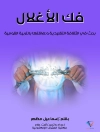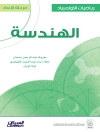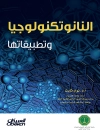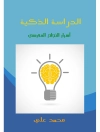This book provides a synopsis of recently published empirical research into the acquisition of reading and writing in Arabic. Its particular focus is on the interplay between the linguistic and orthographic structure of Arabic and the development of reading and writing/spelling. In addition, the book addresses the socio-cultural, political and educational milieu in which Arabic literacy is embedded. It enables readers to appreciate both the implications of empirical research to literacy enhancement and the challenges and limitations to the applicability of such insights in the Arabic language and literacy context. The book will advance the understanding of the full context of literacy acquisition in Arabic with the very many factors (religious, historical, linguistic etc.) that interact and will hence contribute to weakening the anglocentricity that dominates discussions of this topic.
Inhaltsverzeichnis
Preface.- Foreword.- Introduction.- PART ONE: THE ARABIC LANGUAGE. Chapter 1: The Structure of Arabic Language and Orthography.- PART TWO: ARABIC LEXICAL REPRESENTATION AND PROCESSING. Chapter 2: Is the Arabic Mental Lexicon Morpheme-based or Stem-based? Implications for Spoken and Written Word Recognition.- Chapter 3: Word Recognition in Arabic: Approaching a Language-Specific Reading Model.- Chapter 4: Why is it Hard to Read Arabic? .- PART THREE: ARABIC READING AND SPELLING DEVELOPMENT AND DISORDERS. Chapter 5: An Epidemiological Survey of Specific Reading and Spelling Disorders in Arabic Speaking Children in Egypt.- Chapter 6: Types of Developmental Dyslexia in Arabic.- Chapter 7: Narrative Development in Arabic: Story Re-telling.- Chapter 8: Cognitive Predictors of Early Reading Ability in Arabic: A Longitudinal Study from Kindergarten to Grade 2.- PART FOUR: ARABIC DIGLOSSIA, LANGUAGE AND LITERACY. Chapter 9: The Effect of Diglossia on Literacy in Arabic and Other Languages.- Chapter 10: Acquiring Literacy in a Diglossic Context: Problems and Prospects.- Chapter 11: A New Look at Diglossia: Modality-Driven Distinctions between Spoken and Written Narratives in Jordanian Arabic.- Chapter 12: Literacy Acquisition and Diglossia: Textbooks in Israeli Arabic-speaking Schools.- Chapter 13: Diglossic Knowledge Development in Typically Developing Native Arabic-speaking Children and the Development of ADAT (Arabic Diglossic Knowledge and Awareness Test).- PART FIVE: ARABIC EMERGENT LITERACY: SOCIO-CULTURAL FACTORS. Chapter 14: The Development of Young Children’s Arabic Language and Literacy in the United Arab Emirates.- Chapter 15: Mother-Child Literacy Activities and Early Literacy in the Israeli Arab Family.- PART SIX: ARABIC LITERACY DEVELOPMENT IN SPECIAL POPULATIONS. Chapter 16: Environmental Contributions to Language and Literacy Outcomes in Bilingual English-Arabic Children in the U.S.A..- Chapter 17: The Development of Grapho-phonemic Representations among Native Hebrew Speakers Learning Arabic as a Foreign Language.- Chapter 18: Braille Reading in Blind and Sighted Individuals: Educational Considerations and Experimental Evidence.- Subject Index.- Author Index.
Über den Autor
Elinor Saiegh-Haddad is a professor of Linguistics in the English Department of Bar-Ilan University, Israel and a consultant for the National Authority for Testing and Evaluation of the Israel Ministry of Education (RAMA) as well as the Centre for Educational Technology (CET). Her main research areas include the acquisition of reading and writing in bilingual children and in Arabic diglossia and the relationship between oral language skills and the acquisition of literacy. Prof. Saiegh-Haddad has published numerous articles on literacy acquisition in children and co-edited (with Esther Geva) a special issue of Reading & writing on the simultaneous acquisition of reading in two languages. She has also been active in curriculum reform and development in Israel in the field of literacy (Arabic as L1 and English as FL) at both the elementary and pre-school levels.
R. Malatesha Joshi, Ph.D., is Professor of Reading/Language Arts Education, ESL and Educational Psychology at Texas A&M University, where he teaches and conducts research in literacy development and literacy problems among monolinguals and bilinguals. Dr. Joshi is the founding Editor of Reading and Writing: An Interdisciplinary Journal, rated one of the top journals in education and educational research. A monograph series titled Literacy Studies: Perspectives from Cognitive Neurosciences, Linguistics, Psychology and Education is also under his editorship. Additionally he serves on the editorial boards of various scientific journals. He has published numerous books and scientific papers in high-impact journals and has presented scientific papers in professional meetings in many parts of the world and has received many awards. He has also served on the review panels for Institute of Educational Sciences as well as the National Institute for Child Health and Human Development.












